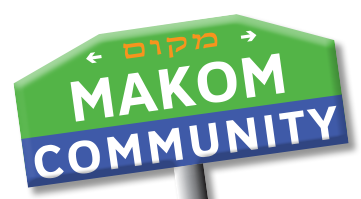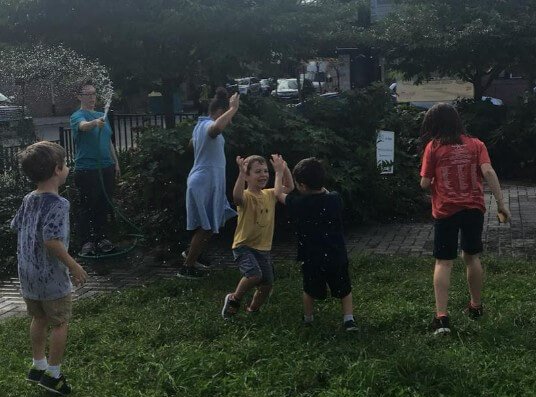
The first years of Makom Community were beautifully messy, challenging, and exhausting. You might wonder… How did things get started? How did you figure out that there was such a clear need for this new model and pedagogy of Jewish education for kids and their families? How did you keep going when things were challenging? What challenges has Makom overcome and who helped along the way?
In the fall of 2014, the Graduate Student network put together a full week of Sukkot programming in a Sukkah that friends and neighbors built together in Julian Abele Park at 22nd & Carpenter. Just as my wife Naomi and I were starting to think about having kids, I hosted a toddler and kid-centered Sukkah party on a whim. We sang songs, shook the lulav, built edible sukkot, and met many neighbors. This was my first real glimpse of how many families in Center City are hungry for Jewish connection. Overwhelmingly, the people in attendance that day were not otherwise connected to Jewish community, though they wanted to be.
Over the next nine months, I’d have coffee with 150 people. Parents, prospective parents, grandparents, and Jewish professionals of many generations shared their stories. A multilayer intergenerational picture of Jewish education became clear to me. I heard stories of warm family meals, strong, and powerful childhood foundations in Jewish education in synagogues, in day schools, and in summer camps across the denominational spectrum. I also heard some challenging and troubling experiences of Jewish education in childhood, causing these now adults to be hesitant to connect their children with experiences that in any way reminded them of their own. The last layer involved hearing how folks felt shut out by the Jewish community as they entered college and young adulthood. These stories included them coming out, questioning God or prescriptive Jewish practice, and choosing a partner of another culture, heritage, or faith. But that didn’t mean they didn’t see themselves as deserving a place at the communal table. It simply meant that they hadn’t found a place at the table that could grow with them. We needed to create something new, from a place of human-centered design. What did the actual, unique, beautiful, divine humans living in Center City Philadelphia need? And how much of it could we provide?
So together, over 150-odd cups of coffee, we began to dream. What if Jewish Education was built for working-parent schedules? That would require not taking away from the limited time working parents have with their kids on weekdays. It meant eliminating the obstacle of leaving work to get our children from school to Jewish education in the afternoon. It meant not sacrificing our precious weekend time with our kids (when that time is already so valuable and so limited). It would also mean building in flexibility– some weeks parents would stay for Friday night services, and some weeks they would have other plans. Kids have sports and an array of other commitments with a variety of schedules, and kids don’t need to be put in the position to choose between their love for poetry club, dance, or theater and accessing the full richness of Jewish wisdom.
As the dream was refined, our initial research question was, “Can we create deep, meaningful, joyful Jewish education for kids and families on a flexible schedule?” 10 years later, I’m proud to say we’ve done just that.
We began programming to test our initial question and spread the word in January of 2014 with monthly Family Shabbat celebrations. Since family experience was so core to the development of Makom Community, it only made sense. These early Family Shabbat celebrations happened around a parachute, waving scarves and marching as we crossed the Red Sea, with kids sitting in parents’ laps in various rented rooms. We provided sacred connective time for parents and kids within the holy container that is Shabbat and Jewish time. In these early moments, we were careful to always provide fully transliterated and translated resources so that parents from a huge variety of backgrounds could participate equally and see themselves as interpreters of Jewish wisdom for their own families. These founding families and formative gatherings guided how we still approach Shabbat and Jewish practice today. At Makom, Judaism is how parents (and grandparents) connect to their children amidst all the chaos of working parent life.

In the first year of Makom Community, we already began playing with what it meant for kids to hold power in the learning space. This meant being able to get the whole group quiet and tell them something important and why it was important. We explored what it means to build a learning space where deeply listening to each other and building our own skills around empathy is at the core of our relationships with each other and Jewish learning. What would later become Jewish Placemaking, Makom Community’s unique pedagogy, was germinating and taking root from the beginning. It started with holding relationships front and center. This involved responding empathetically to needs, creating a radically inclusive community with no judgments and low barriers to entry, and making it clear that kiddos have power in their community.
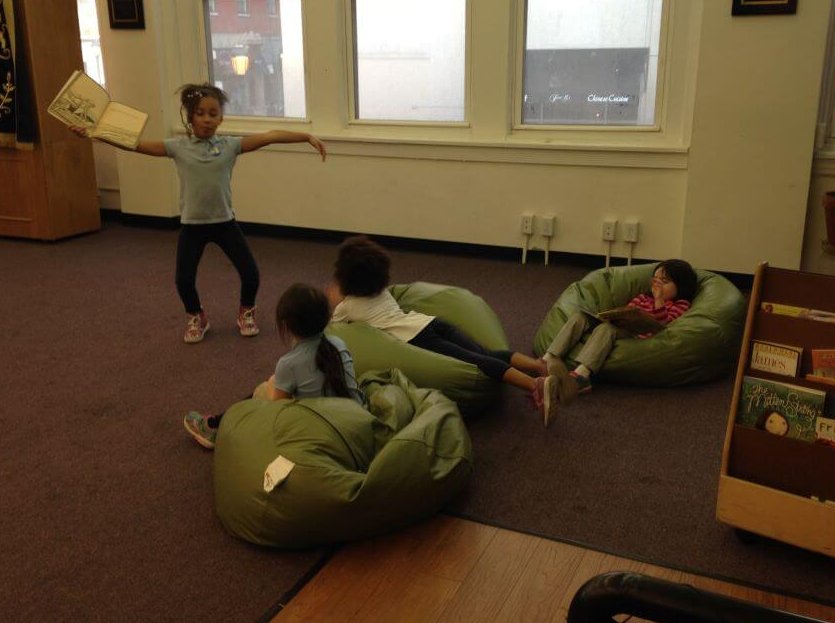
And as beautiful as all of the learning was, that year (and the years that followed!) were not without significant challenges – and space was a constant challenge!
When we moved out of the church basement, we met with several local synagogues. All of them wanted to be helpful and were very gracious in considering sharing space with us. Ultimately, one did have space to share with us. If Rabbi Hirsch and Mekor Habracha had not taken Makom in during our pilot year, we would not have survived to teach Torah to thousands of kids. For the next three years, we shared space with Mekor Habracha, a Modern Orthodox congregation, with space on the second floor over a convenience store in Rittenhouse Square. That took some negotiation when baby namings needed to happen quickly on a camp day or when families were just confused about how connected we were to Mekor Habracha.
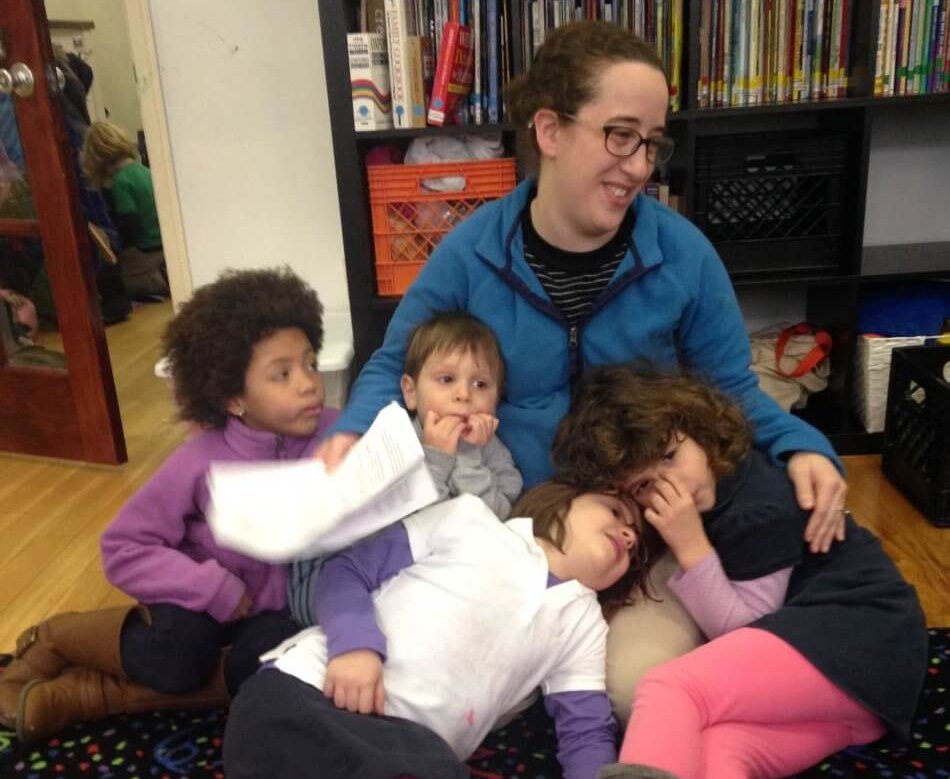
In 2017, Mekor Habracha was notified that the owner of the building was ready to remodel the space, and we’d all need to move out. We were only given 60 day’s notice, and it was the middle of the school year! (And I was pregnant!) Mekor Habracha found a temporary space for themselves in Two Penn Center. We moved with them there for about 8 weeks. Thankfully, the neighbors in this fancy office building were surprisingly gracious about kids changing into and out of bathing suits on camp days in the shared hall bathroom and being kid-level noisy in elevators with them! And the kids and parents were troopers about walking so much farther. There was even a bit of lollipop bribery involved! In early summer, Mekor Habracha moved to 15th & Walnut as their long-term home. We didn’t feel that was the right part of town for us to move with them.
After much unsuccessful searching, and with the helpful connection of a Makom family we moved to 2013 Sansom Street about 3 weeks before I gave birth and about a month before school ended! The landlord graciously put us on a step-up lease so we could ease our way into paying market-rate rent over several years.

When we moved to 2013 Sansom Street, there were still giant pedicure chairs that had to be moved to the back and unfinished rooms. What is now our teaching kitchen was a walled-off massage room. For the first school year we were in that building, we used the front (finished) portion of the first floor and the much smaller third floor. Two teachers taught younger learners on the first floor, and I taught the older kids on the third floor. We had only one toilet on each floor. Sometimes, in desperation, we’d call the teachers on the other floor and send a potty-dancing child up or down the hulking flight of stairs to get to a toilet.
After a year spent living in that space, we grew to better understand what we’d need. Our landlord at the time was also an architect who owned a general contracting business. So with his help and a grant from Jewish Federation Real Estate, we removed the massage room, finished out the back room (which is now two classrooms), built our teaching kitchen, added two more toilets, and added dividers to make the space more useful for a variety of age groups engaged in daily learning. We could then open up the space for large gatherings and close it for smaller daily learning. It was a beautiful and flexible space. After a full year on Sansom Street, we worked closely with several volunteers to add in storage, paint the walls in ways that defined the space, and allowed for better flow in our learning space.
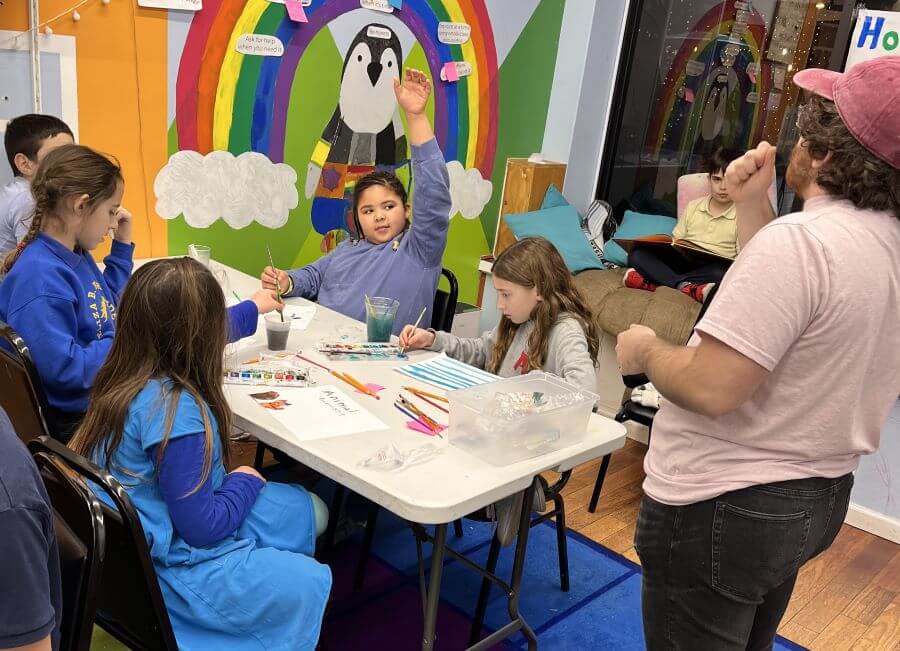
Now six years later we are ready for our next move, to a home that is built for our needs and we are committed to for another decade. I don’t know how many cups of coffee Makom leadership (notice it is no longer just me) has had since 2014. What I do know is that Makom Community is set up to teach, hold family’s stories and needs, and welcome empathetic kiddos into our world from our new home for another decade of coffee and deep Jewish learning rooted in community.
